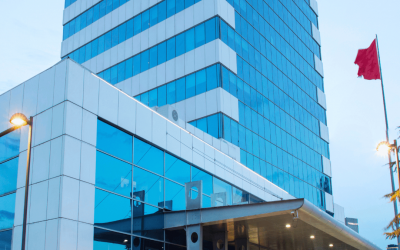There are very few things in business that we can predict with any certainty. In the world of Human Resources, being able to predict the best job candidates to hire is like finding the Holy Grail of Arthurian legend. Except in HR analytics we have data metrics and artificial intelligence to follow our quest.
Predictive Metrics In Business
In general, there are four things in business that you can predict:
- Opportunities
- Threats
- Fraud
- Demand
Here at ZeroedIn, we found that placing a HR lens over those metrics gives you predictive talent metrics for:
- Acquiring talent
- Building talent
- Managing talent
- Retaining talent
Predictive metrics help our clients identify topnotch, loyal workers who have staying power within the organization. In this tight employee market, predictive metrics are a smart weapon for winning the war on talent.
AI Learns The Talent Story To Predict HR Measures
We use the power of machine learning – a subset of artificial intelligence (AI) – to build our algorithms for predictive talent analytics. Essentially we marry statistics to AI by guiding the algorithms to learn from the data. Each time we add new layers of data to the old, we get more intelligent algorithms.
Zeroing In On The Prediction Story
Here’s how it works in real life. A client may want us to examine their talent flight risk, a topic we’ll be covering in depth in a future blog. Working backwards from what we already know about employees who left, we use the story that was to tell the story that will be.
ZeroedIn approaches this by looking at employees who voluntarily left an organization as well as those who stayed. We draw a virtual bubble around everything the people in each group have in common. These might include the number of pay raises and promotions, performance reviews, number of days absent and other measures that the HR department tracks, even commuting distance. We prepare and classify the data in a way that allows the algorithms to calculate the distance between the points across a multi-dimensional plane. The distance between points identifies similarities and differences between employees.
Then our algorithms analyze the employees who are still with the company on a regular basis to see which ones look most like those who have left. The closer to the flight-risk bubble people are, the more likely they are to leave.
How HR Can Turn Predictive Into Preventive
HR can leverage the power of predictive algorithms to get quick results. Identifying a flight risk gives HR the ability to rewrite the ending of the story. Managers can conduct “stay interviews” to find out what is going on and ask what would make their jobs or the work environment more appealing for them. A process of discovery might also reveal where opportunities for engagement were overlooked, providing a chance to correct the course for the benefit of the both the individual and the company before it’s too late.
Learn More About Predictive Metrics
Organizations often want to see predictive metrics when their business is at a turning point. If your HR department is hearing questions from the C-suite such as, “Where are we heading? What’s going to happen in the future?” this could be a good time to learn more about predictive metrics for your workforce.
Stay tuned over the next few weeks as we take you through our predictive talent metrics and indicators in a series of workforce analytics blogs at ZeroedIn.com.




